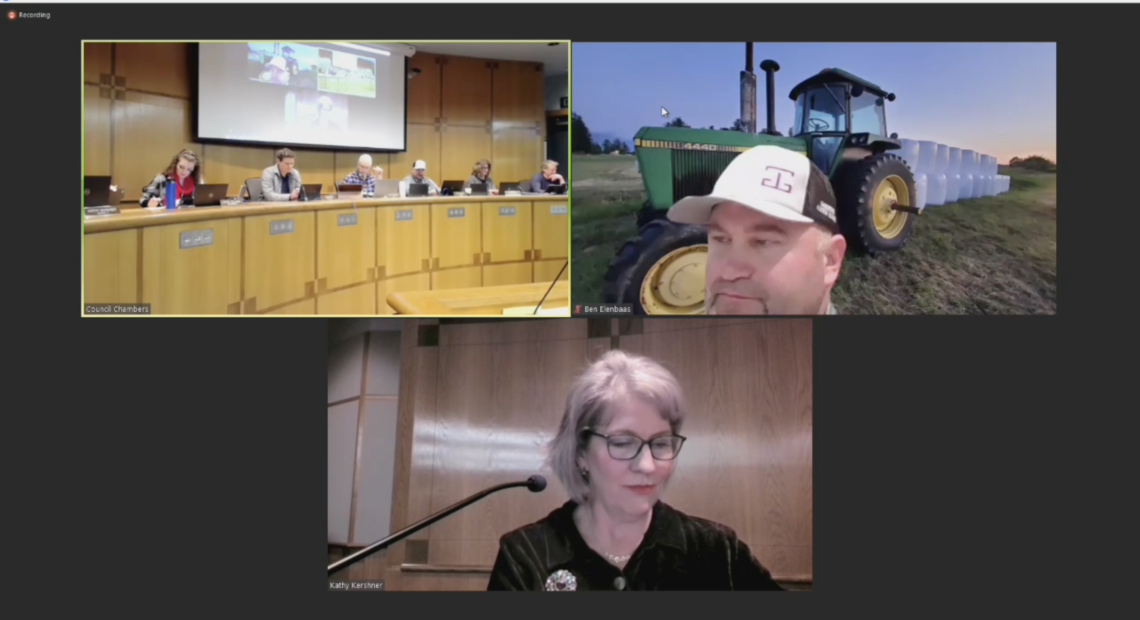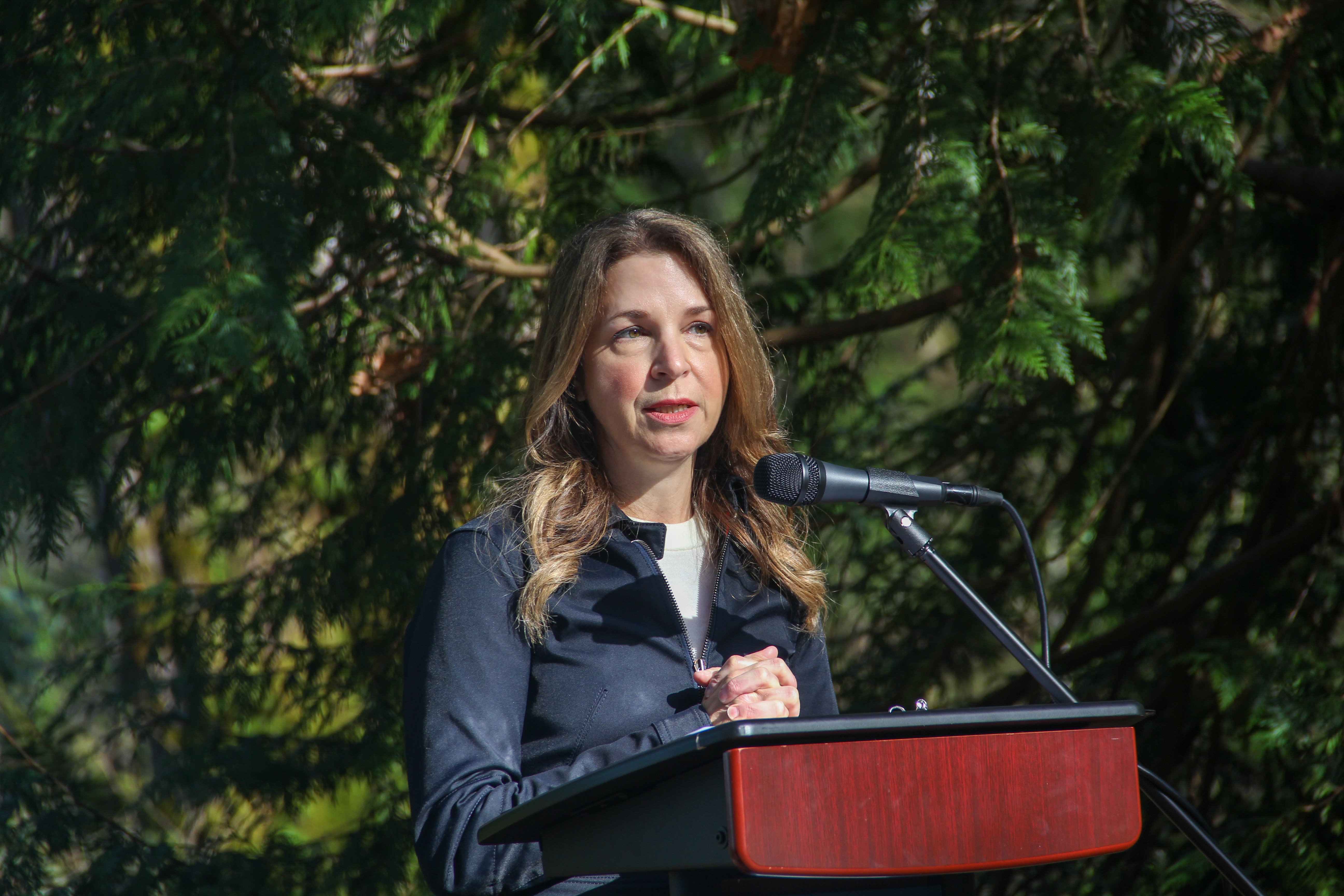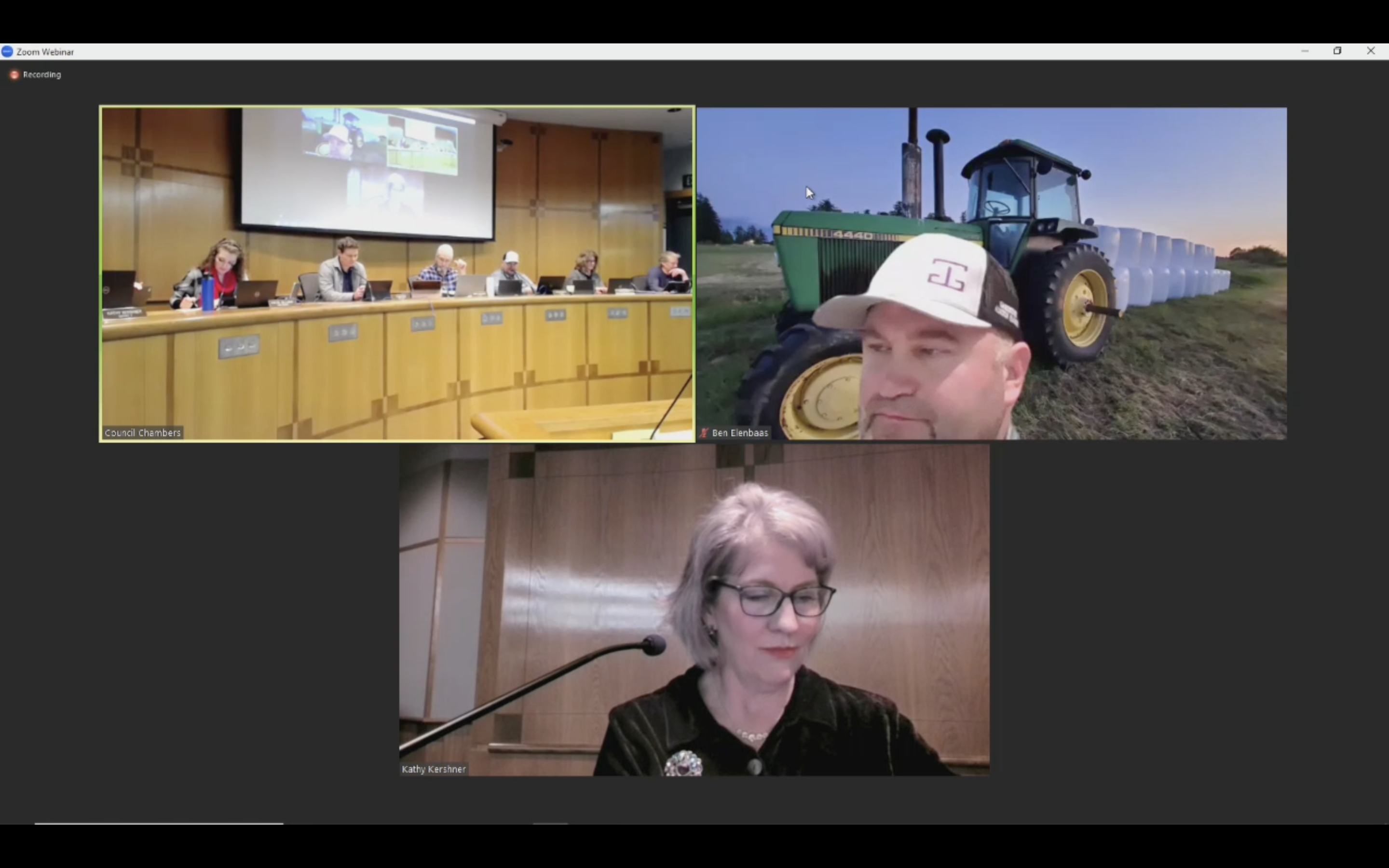
Whatcom County makes no forest conservation recommendation, seeks clarity from DNR
Listen
(Runtime 1:11)
Read
The Whatcom County Council made no specific recommendations on which county timberlands to conserve for the next phase of the Washington State Department of Natural Resources’ carbon offset project.
In the letter, the council affirmed its commitment to work with the department, and instead of offering recommendations, asked the DNR to provide more information about the potential impacts of the project.
The DNR’s carbon offset project is a new one.
Announced last April, the project seeks to conserve an estimated 10,000 acres of department-managed land on the west side of the state. Instead of the trees on those acres being harvested for timber production, they will be conserved in perpetuity for carbon sequestration. Where before, the timber would have been sold for state revenue, the land would be leased by companies looking to offset their carbon emissions.

Hilary Franz, Commissioner of Public Lands, announcing the Department of Natural Resource’s carbon offset project, April 6. (Photo courtesy of DNR Communications)
The project is to be completed in two phases, and Whatcom County Council is commenting on the proposed lands to be conserved in Phase II of the plan.
Four parcels of Whatcom County land, a total of 664 operable acres of timber land, are being proposed for inclusion in Phase II of the project. Before Jan. 10, it seemed the council was ready to recommend that the department conserve all four parcels. But after its Climate Action and Natural Resources Committee meeting Tuesday, the council shifted directions.
Council members expressed skepticism over the project, including its impacts to the timber industry in the county, and local beneficiaries of the revenue.
During the meeting, Council Member Ben Elenbaas, District 5, expressed his disapproval of the department’s carbon project in Whatcom County.
“Do your pilot project somewhere else, prove that it works somewhere else,” Elenbaas said.
He went on to say that he feels Whatcom County’s timber economy is on the brink of extinction.
“I’m concerned that the next parcel of land we take out of production could be the nail in the coffin,” Elenbaas said.
Were all four proposed parcels to be conserved in Whatcom County, the project would be setting aside a total of 1,588 acres of operable timber land to be purchased as carbon offsets.
The council agreed they need more information before they can recommend any of the proposed parcels for conservation in Whatcom County. They amended the final letter to include specific questions Council Member Kathy Kershner, District 4, had included in a draft alternative letter.
The council is asking the department to provide projected revenue comparisons for carbon leases versus timber harvests, a comparison between the carbon pooled by conserving versus harvesting, specific impacts to the forest products sector in Northwest Washington, and the environmental benefits of setting aside these sites from timber harvest.
Kershner stated in the Climate Action and Natural Resources Committee meeting that she is not ready to support these four parcels being included in the project, without further information on revenue impacts and how the project will reduce carbon emissions.
“I don’t think that we have adequate information about exactly the hit that our districts that rely on this timber revenue are going to take,” Kershner said.
Council Member Kaylee Galloway, District 1, is chair of the Natural Resources Committee. She wrote multiple drafts of the final letter that will be sent to the department.
NWPB spoke with Galloway prior to Tuesday’s council meeting. Galloway said the pivot to request more information before offering a recommendation came from trying to balance what a diverse array of stakeholders expressed to the council.
“There’s still a lot of questions to be answered around this pilot carbon project,” Galloway said. “There are a lot of folks, including myself, who are really excited by the prospects of this new program, as a way to enhance carbon storage and sequestration … On the other hand, in Whatcom County, we have such a thriving timber economy, and we want to keep it thriving.”
The DNR will consider feedback from stakeholders, such as tribes and counties, to inform its selection of the final parcels to be conserved. Those parcels will then be presented to the Board of Natural Resources for approval, alongside a financial analysis.
Whatcom County receives money from timber harvests as a designated beneficiary of state trust lands. The revenue garnered from companies purchasing carbon offsets is, itself, meant to offset the loss of money from harvesting the trees for timber.
The areas being proposed for conservation in Phase II of the carbon project for all counties can be found on the DNR website.
One of the proposed land parcels in Whatcom County is the Upper Rutsatz parcel. Last year, the department paused a timber sale on that parcel, 163 acres of operable land and over five and a half million board feet of timber. In the letter to the DNR, the county council acknowledged the high conservation value of this parcel, along with the Van Zandt Dyke parcel also being proposed. These lands include mature forests, remnant old growth and border the Middle Fork Nooksack River, according to the letter.
That land is just an example of a number of parcels that conservationist groups have fought to protect from harvest in recent years. A number of individuals and groups have called for the DNR to conserve what they call, “legacy forests” which are trees that have been growing prior to World War II.
When the carbon project was first announced, many in the timber and forestry industry pushed back on the concept that conserving trees from harvest would sequester more carbon. A study published in 2020 by University of Washington found that Washington’s private forestry industry was a net global warming mitigator for the state, equivalent to 12% of the state’s greenhouse gas emissions in 2015.
















